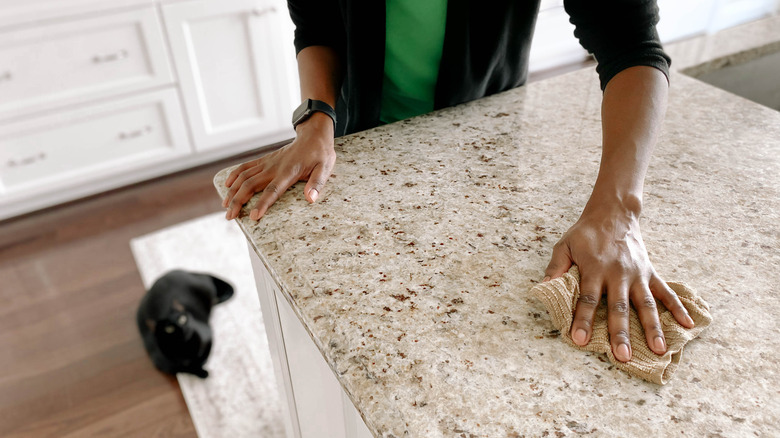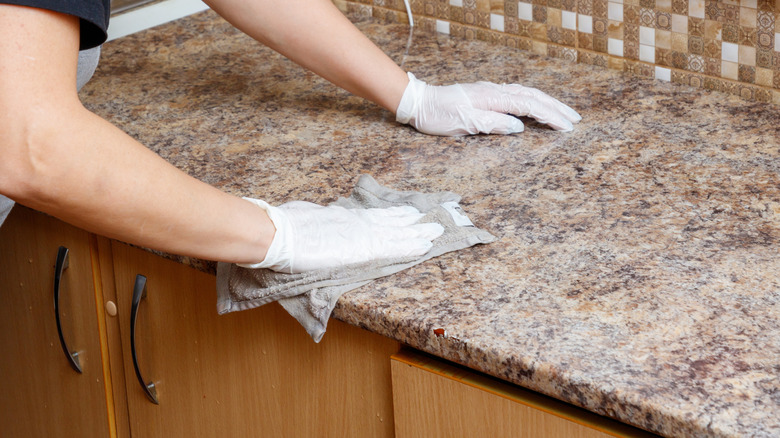Ingredients To Look For In Nontoxic Countertop Sealants (And What You Should Avoid)
We may receive a commission on purchases made from links.
Granite countertops generally require some sort of protection due to their porous nature, but many commercial sealants contain volatile organic compounds (VOCs) and synthetic resins that can be harmful to you and your beautiful countertop. Sealants work by filling small pores while allowing the stone to breathe, preventing moisture damage, and keeping your granite countertops in pristine condition. Sadly, there are very few natural ingredient products out there for stone sealants — like this Real Milk Paint All-natural Sealer.
A beeswax/oil mix is one successful non-toxic option that's perfect for your kitchen. Unlike commercial products, these non-toxic versions avoid chemicals like PFAs (polyfluoroalkyl substances), often referred to as "forever chemicals," commonly found in synthetic sealants. No matter what you decide to go with, you should always test a sealer on a small inconspicuous area first, as some oils may darken stones. If you're one not to take chances, it's always worth asking: Should you seal your granite countertop at all? The answer isn't always yes.
When to reapply countertop sealants
When looking for a sealant, always read the label, be sure they are specifically made for indoor use, and contain statements like "food-grade" or "toy safe." You should steer clear of anything containing formaldehyde, phthalates, or petroleum distillates, which can all contaminate air quality and leach into food. For households prioritizing non-toxic purity, simple wax and oil blends are the way to go. Do keep in mind that natural sealers will require more frequent reapplications every six to 12 months versus one to three years for synthetics.
Luckily, there is a simple test that will tell you if it's time to reseal your stone countertop: the water bead test. Simply clean and dry a small section of your countertop, and then place a quarter-sized water droplet on the surface. Leave it to sit for around 10 minutes, and then check on it. If it has held its shape, then you have a well-sealed countertop. However, if the water has flattened a little or left a dark stain when wiped away, you'll want to consider reapplying your sealer. It's always good to check multiple areas of your countertops when doing this test, as high-use areas can easily degrade faster than other spots in your kitchen.

